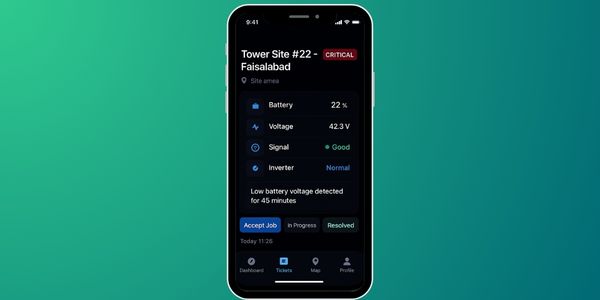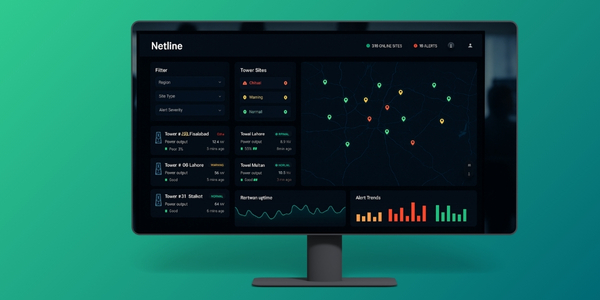Challenge
Netline Group had recently expanded its portfolio into deploying off-grid solar and hybrid power systems across rural and semi-urban regions of Pakistan — powering telecom towers, mini-grids, and other critical infrastructure.
As their network grew, they ran into key operational constraints:
- Limited real-time visibility: Site health information — inverter status, battery charge cycles, network connectivity, and environmental anomalies — was delayed or fragmented.
- Slow fault detection: Inverter faults or network dropouts were often discovered only after partner reports, causing extended downtime.
- Inefficient maintenance workflows: Work orders and troubleshooting were handled through emails, spreadsheets, and phone calls, making coordination messy.
- Support overload: Central operations was consumed with repetitive status calls from the field.
- Scaling risk: With plans to grow past 200 sites, the existing manual processes would collapse under the load.
Netline came to Envision360 with a clear request: “We need a mobile application that can give us real-time visibility, automate alerts, and let field partners manage maintenance directly on-site.”


